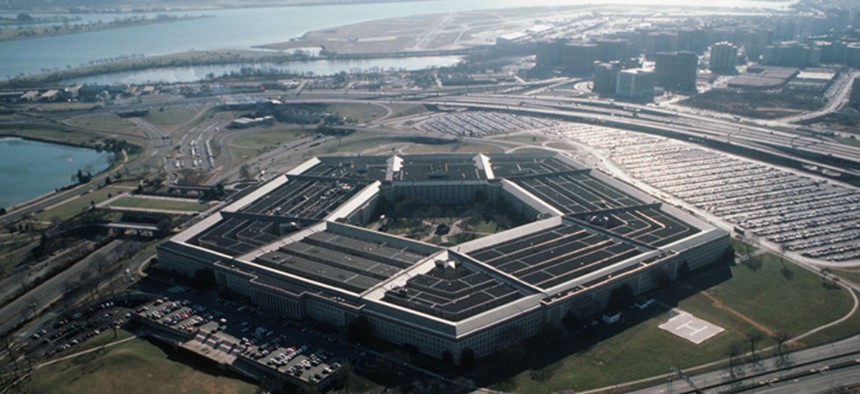
Defense Department file photo
Defense Employees’ Safety ‘Jeopardized’ by Lack of Workplace Violence Protocols
Civilians are better prepared for mass shooting response than military, report finds.
The Defense Department has not issued workplace safety protocols that apply to its entire workforce, according to a new report, leaving employees still vulnerable to violence despite multiple reviews to address the issue in light of the 2009 Fort Hood shooting.
After that shooting by an Army psychiatrist that left 13 dead and an additional 43 wounded at the Texas base, the Pentagon commissioned a review board to better protect its workforce. That panel issued 79 recommendations in 2010, which were followed by a Defense Science Board review of how to predict violent behavior and an additional directive from the department’s secretary.
In implementing the recommendations from the various findings, Defense’s inspector general found different levels of the department followed different suggestions, and the new policies were not enacted consistently across components or employee type.
“Military personnel, DoD civilian employees and contractors were not equally prepared to prevent and respond to an act of workplace violence,” the IG wrote, “which could jeopardize their safety during a workplace violence threat or incident.”
The office of the under secretary for personnel and readiness has issued guidance to increase training for civilian employees, but it does not apply to military or contractor personnel. The under secretary’s office told the IG that the Uniform Code of Military Justice is sufficient to address “bad behavior” in the workplace among military staff. The under secretary drafted and signed more comprehensive guidance in April 2014, but its release was delayed by another shooting at Fort Hood. The guidance had still not been issued at the time of the IG’s investigation.
Even if that guidance were implemented, the IG said, it includes interagency guidelines designed to protect federal employees in non-military positions, again leaving military personnel without sufficient protocols.
The assistant secretary for homeland defense and global security was tasked with implementing the 79 recommendations issued by the Fort Hood review board, and it told the IG it has completed 73 of them. The IG still found no departmentwide policy. This led the Defense Threat Reduction Agency to address each component’s workplace safety policies individually, rather than through a comprehensive approach. The various components have differing levels of protections in place; the Army, Navy, and Air Force, for example, have not yet issued workplace violence prevention policies. DTRA said it would issue a memorandum on addressing various threats, but it has not yet done so.
The IG visited two bases to review their workplace violence strategies, but found “the level of preparedness also varied among services and tenants located on the same installation.”
In its implementation of the Fort Hood recommendations, meanwhile, the assistant secretary’s office ignored existing policies altogether. That led to a failure to review and integrate programs already in place, the IG said. One departmentwide directive said Defense would leverage information derived from acts of workplace violence to minimize future threats, but it failed to state any plan on how it would accomplish that goal.
Management at the Pentagon rejected some of the IG’s findings, saying Defense employees have “countless tools at their disposal” to address workplace violence, including calling military or local civilian authorities. The IG recommended the department identify ongoing systemic issues, better coordinate across components and streamline existing programs.
The IG said it is still waiting for the department to adequately respond to its proposals.







